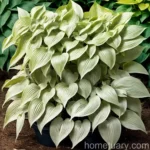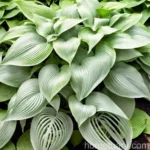The Wonderful World of Hosta Longissima
Introduction
Hosta longissima, a member of the family Asparagaceae, is a fascinating and versatile plant that has captivated the hearts of gardeners and plant enthusiasts alike. Its unique foliage, impressive size, and ability to thrive in various environments make it a popular choice for landscaping and gardens. In this comprehensive guide, we will delve into the mesmerizing world of Hosta longissima, exploring its cultural significance, uses, care requirements, and much more.
What is Hosta Longissima?
Hosta longissima, commonly known as the “Longissima plantain lily,” is a perennial herbaceous plant that is highly valued for its ornamental foliage. It is native to East Asia, particularly Japan, where it is found in shaded woodlands and moist areas. The plant is characterized by its long, lance-shaped leaves that form an attractive clump, creating a striking visual appeal.
Key Takeaways – Hosta Longissima:
- Hosta longissima is a perennial herbaceous plant known for its ornamental foliage.
- It is native to East Asia, particularly Japan, and is found in shaded woodlands and moist areas.
- The plant features long, lance-shaped leaves that form an attractive clump, adding visual appeal to gardens and landscapes.
Culture
Uses
The versatile nature of Hosta longissima makes it a popular choice for various landscaping and gardening purposes:
-
Ornamental Plant: The striking foliage of Hosta longissima adds elegance and visual interest to garden beds, borders, and containers.
-
Shade Garden Accent: Due to its preference for shade, Hosta longissima is an excellent choice for shaded gardens and woodland landscapes.
-
Erosion Control: The dense growth habit of Hosta longissima makes it a suitable option for stabilizing soil and preventing erosion.
-
Pond Edge Planting: Its tolerance for moist soils makes Hosta longissima an ideal choice for planting along pond edges or in damp areas.
Water
Proper watering is essential for the health and well-being of Hosta longissima. While it is tolerant of moist soils, overwatering should be avoided to prevent root rot and other water-related issues. Here are some key considerations for watering Hosta longissima:
- Water deeply and consistently, ensuring that the soil is evenly moist but not waterlogged.
- During hot and dry periods, increase the frequency of watering to prevent moisture stress.
- Mulching around the plants can help retain soil moisture and reduce water evaporation.
Sunlight
Hosta longissima thrives in partially shaded to fully shaded conditions, making it an excellent choice for shaded and woodland gardens. When selecting a planting location, consider the following sunlight requirements:
- Partial Shade: Hosta longissima prefers dappled sunlight or filtered shade, especially during the intense midday sun.
- Full Shade: In regions with hot summers, providing full shade can help prevent sun damage and maintain the plant’s lush foliage.
Fertilizer
To promote healthy growth and vibrant foliage, regular fertilization is beneficial for Hosta longissima. Consider the following fertilizer recommendations:
- Use a balanced, slow-release fertilizer that is specifically formulated for ornamental foliage plants.
- Apply the fertilizer in early spring before new growth emerges, and again in mid-summer to support continued growth and vigor.
- Avoid excessive application of high-nitrogen fertilizers, as this may result in rapid but weak growth.
Soil
The soil conditions play a significant role in the overall health and vitality of Hosta longissima. Here are some essential considerations for soil preparation and maintenance:
- Well-Drained Soil: Hosta longissima thrives in well-drained, humus-rich soil that retains moisture without becoming waterlogged.
- pH Level: The ideal soil pH for Hosta longissima is slightly acidic to neutral, ranging from 6.0 to 7.5.
- Amendments: Incorporating organic matter such as compost or well-rotted manure can improve soil structure and fertility.
Pruning
Pruning is an important aspect of Hosta longissima care, as it helps maintain the plant’s appearance and removes damaged or unsightly foliage. Consider the following pruning guidelines:
- Remove any discolored, damaged, or dead leaves regularly to promote a neat and tidy appearance.
- Cut back the flower stalks after the blooming period to redirect the plant’s energy towards foliage development.
- Divide overcrowded clumps every few years to rejuvenate older plants and improve overall vigor.
Propagation
Propagating Hosta longissima allows for the expansion of its presence in the garden and the sharing of its beauty with others. Here are some common methods of propagation:
- Division: Divide established clumps in early spring or late summer, ensuring that each division has ample roots and healthy growth points.
- Tissue Culture: In a controlled laboratory setting, tissue culture can be utilized to propagate large numbers of genetically identical plants from a small tissue sample.
Container Popularity
Hosta Longissima is also a popular choice for container gardening, offering an attractive foliage display in a confined space. Some key considerations for growing Hosta longissima in containers include:
- Use a large, sturdy container with adequate drainage holes to prevent waterlogging.
- Select a well-draining potting mix that provides ample nutrients and moisture retention.
- Position the container in a shaded or partially shaded location to mimic the plant’s natural habitat.
Common Diseases
As with any plant, Hosta longissima is susceptible to certain diseases that can affect its overall health and appearance. Understanding these common diseases and their management is crucial for maintaining the plant’s vitality.
Disease Diagnosis
Some of the common diseases that may affect Hosta longissima include:
-
Hosta Virus X (HVX): Characterized by mottled, distorted foliage, stunted growth, and overall decline in plant health, HVX is a viral disease that can devastate Hosta populations.
-
Foliar Nematodes: These microscopic roundworms cause distinctive lesions and leaf discoloration, leading to foliage damage and decline.
-
Crown Rot: When the crown and basal plant tissues become infected with rot pathogens, it can result in wilting, yellowing, and eventual collapse of the plant.
-
Slime Flux: This bacterial disease can cause sections of the plant to ooze foul-smelling sap, leading to aesthetic issues and potential weakening of the plant.
Common Pests
Hosta longissima is also prone to attacks from various pests that can compromise its growth and appearance. Some common pests include:
-
Slug and Snails: These slimy creatures can cause extensive damage to Hosta foliage, leaving behind unsightly holes and lesions.
-
Deer: In areas with high deer populations, Hosta longissima may become a target for grazing, resulting in significant foliage damage.
-
Spider Mites: These tiny pests feed on plant sap, causing stippling and discoloration of the leaves, ultimately weakening the plant.
-
Aphids: These sap-sucking insects can congregate on the foliage and stems, leading to distorted growth and the potential for the transmission of viral diseases.
Botanist’s Tips
To ensure the successful cultivation and care of Hosta longissima, consider these valuable tips from botanists and experienced gardeners:
-
Choose companion plants that complement the texture and color of Hosta longissima foliage, creating visually appealing combinations in the garden.
-
When designing a garden or landscape, consider the seasonal changes of Hosta longissima, incorporating other plants that can provide visual interest throughout the year.
-
Prune Hosta longissima with precision, ensuring that each cut is made at the base of the leaf or stem to minimize damage and promote rapid healing.
Fun Facts
-
Hosta longissima is a preferred choice for shade gardens due to its impressive foliage and low-light tolerance.
-
The name “Hosta” is in honor of the Austrian botanist Nicholas Thomas Host, while “longissima” refers to the plant’s elongated leaves.
-
Hosta longissima is not only valued for its ornamental appeal but is also used in traditional Asian medicine for its purported medicinal properties.
Links to External Resources
In conclusion, Hosta longissima is a captivating plant with its remarkable foliage and adaptability to different growing conditions. By understanding its cultural requirements, uses, and common challenges, gardeners can cultivate and appreciate this enchanting perennial with greater confidence and success.
Remember, as you embark on your journey with Hosta longissima, let curiosity be your guide and may the beauty of this plant inspire and nourish your connection with the natural world.















